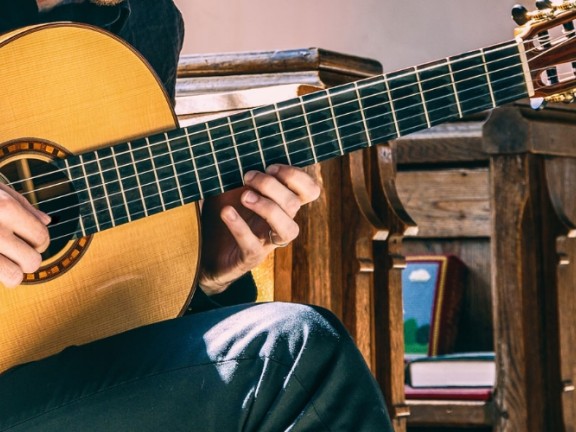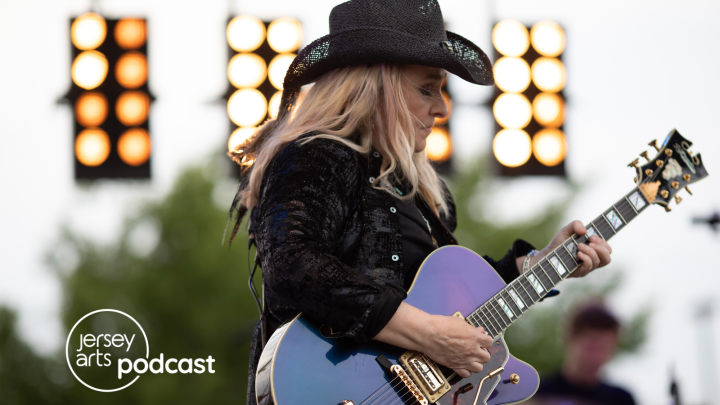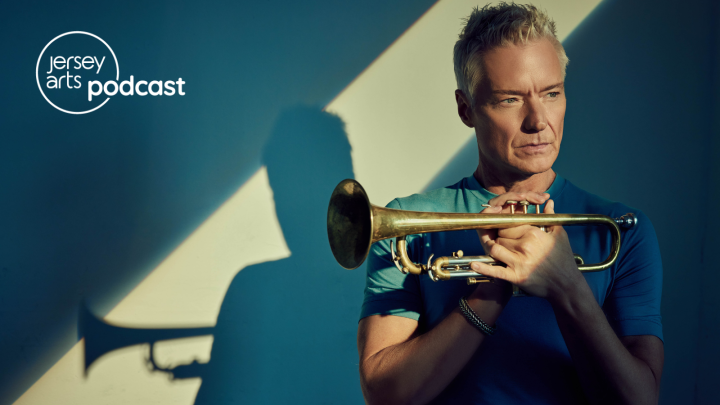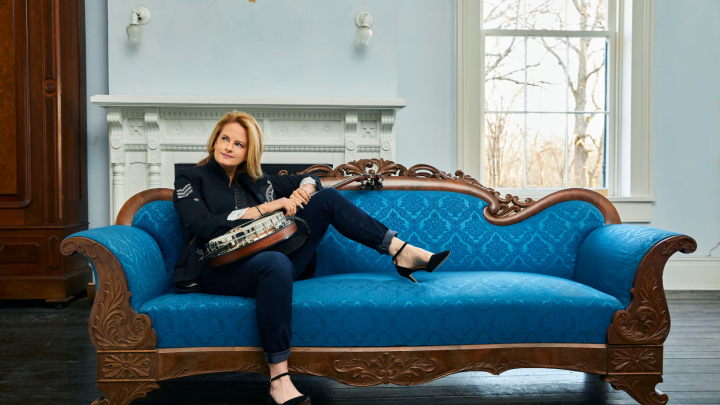John Sebastian Brings That Lovin' Feeling to Sanctuary Concerts

John Sebastian never looked much like a pop star. As the leader of 1960s hit makers The Lovin’ Spoonful, he sported the muttonchop sideburns of a Civil War general. He wore the eyeglasses of a librarian. He sometimes played an autoharp. But he was also one of the most underappreciated songwriters of the decade — finding success at the height of the British Invasion despite fronting an American band playing distinctly American styles of music.Sebastian, now 68, will play selections from throughout his career Saturday, Nov. 17 during a solo show at Sanctuary Concerts in the Presbyterian Church, Chatham Township. It marks a return to the state he once called home — sort of.

Before he found stardom, the New York City native was a student at the Blair Academy boarding school in rural Warren County. Asked if he feels like an honorary Jerseyan, Sebastian chuckles.
“I can’t tell you that the Blair experience was that formative for me,” Sebastian explains. “They didn’t understand dyslexic boys. Their solution was taking the guitar away from me.”
Apparently they didn’t foresee what he’d become. “Well, that was hard to tell at that point,” Sebastian says with a laugh.
The Spoonful’s name may not be as iconic and their music may not be as experimental as their peers’, but their catalog was as diverse as it was catchy. Their hits ranged from pop (“Did You Ever Have To Make Up Your Mind?”) to jugband (“Daydream”) to rock (“Summer In The City”) to country (“Nashville Cats”). Their lesser-known tracks added hints of jazz (“Coconut Grove”) and psychedelia (“Six O’Clock”).
After scoring seven Top 10 singles in four years, Sebastian left the group in 1968. A year later, he played a solo set at Woodstock. In 1976, he landed a No. 1 hit with the theme song to the popular sitcom “Welcome Back, Kotter.” In 2000, he and the Spoonful received the ultimate honor: induction into the Rock & Roll Hall of Fame.
Saturday’s concert is sold out, but cancellations or additional tickets may lead to seats an hour before showtime. Those in New Jersey looking for another way to re-live the ’60s actually have a few choices this week. You can catch Smokey Robinson at the Bergen Performing Arts Center in Englewood on Wednesday, Nov. 14 and at the Mayo Performing Arts Center in Morristown on Friday, Nov. 16. Or you can head to the State Theatre in New Brunswick on Thursday, Nov. 15 for “This Is the ’60s” — a multimedia concert featuring live music, film, dance and more.
Jersey Arts’ Brent Johnson spoke with Sebastian over the phone about his favorite Spoonful song, how women inspired him to pick up the autoharp, and how he spent his childhood seeing folk music heroes stay as guests in his parents’ house.
Jersey Arts: Where was the last place you heard one of your songs play? On the radio? In a supermarket?
John Sebastian: Marshalls or the supermarket, yeah.
JA: What songs do you hear most often?
JS: “Daydream” or “Summer In The City” are the most, probably. Because they were the biggest sellers. Then radio guys who either come from that time or have some interest in it know at least four or five more. What’s fun is when they know the obscure ones.
JA: Well, you guys did have such a deep and varied catalog. You even got quite experimental. Was it important to be so eclectic?
JS: The whole Spoonful idea was to be a band that didn’t sound like the same background every record. We wanted to have kind of a bluesy side and kind of a country side. But those press bastards decided we were folk-rock. (laughs) What an exciting term.
JA: Reading your bio, it seems like you spent your childhood surrounded by famous musicians.
JS: It wasn’t quite that good. I was growing up in Greenwich Village. My father was a classical musician, my mother was a writer for radio — mostly comic writing. So there was a lot of activity around my house. People like Burl Ives and eventually Woody Guthrie were occasionally staying in our spare room.
JA: Did that help inspire you to become a musician?
JS: It did inspire me. But I think even more valuable was the understanding of what a musician is. I always felt sorry for my dear friends — some really great players — whose parents had no connection to music and had no template for the life of a musician. These were very often the guys who could end up with substance abuse problems or just not being smart on the road.
And so much of what I had already in my kit bag when I was 18 or 19 was a model where a musician plays his whole life without really getting very much acclaim very often. The degree of his artistic effort is not reflected in popularity. Very often the popularity comes at a completely different time than when the musician is putting out his best work or just becoming a great virtuoso. It was very good for the first couple of times that my popularity plummeted to have a model that showed that isn’t really how we’re measured. (laughs) It was kind of a relief.
JA: One of the lasting images of your time in the Spoonful is you playing on “The Ed Sullivan Show,” clutching an autoharp instead of a guitar. How did you come about playing an autoharp, which isn’t really a rock ‘n’ roll instrument?
JS: I attended a summer camp as relief from the Blair Academy every summer. (laughs) It was a place with a very open-minded admission policy. I was trying to attract the attention of several of the beautiful young counselors, most of whom weren’t interested in Duane Eddy, I found to my horror. They were really interested in things like The Carter Family. So I learned how to “Carter pick,” and then the next thing was the autoharp. I said, “Well, let me see how Carter picking works on this.” Then, all of a sudden, I found myself being able to play it. When the Spoonful came along, and particularly when “Do You Believe In Magic?” came along, and I realized I had a kind of a shuffle that would go really well on an autoharp, the two things really came together when I started to plug it in.

JA: A lot has been written that the Spoonful was a reaction to the British Invasion — an American band playing American music.
JS: Well, our thought was already forming when we saw The Beatles on “The Ed Sullivan Show.” That was a revelation to say, “Oh, yeah, this can be done and how!”
JA: So it really wasn’t that you guys were trying to make American music in the face of a British takeover of the American charts?
JS: No. I appreciated that a few people wanted to kind of nationalize it. It was nice to have Ed Sullivan, for example, be as aware as he was that we were kind of an American answer after he already had The Beatles on. That was very flattering.
JA: Is there a song you’re most proud of?
JS: I can say I have a favorite because it was the first. And that’s “Do You Believe In Magic?”
JA: Is it true that “Daydream” was inspired by The Supremes?
JS: Yes.
JA: How so?
JS: Well, come to the show, and I’ll tell the story.
JA: What can people expect from the show in New Jersey?
JS: A real cross-section of everything I’ve done. I don’t hide much, as far as the good songs. I kind of show where some of these Spoonful hits came from or where they were rooted in.
JA: My favorite song of yours is one of the lesser-known Spoonful hits: “Darling Be Home Soon.” What was the genesis of that?
JS: It really came from the fact that I was hearing all these songs from musicians about how sad it was to have them be on the road and about their lonely life in hotel rooms. And I was going, “Guys, my dad used to sleep on couches to do this. He’d be out for three months in a station wagon. You ought to be so glad that you are lucky enough to be able to do these concerts. Let’s take it from the other person’s sightline. From the person who has to stay home. That’s more heart-wrenching than your story.” (laughs)
Details: John Sebastian’s performance at Sanctuary Concerts begins at Nov. 17 at 8 p.m. in the Presbyterian Church at 240 Southern Blvd. Admission is $25. Those attending are asked to bring donations of used running shoes or soccer shoes (adult sizes 7-12), which will be reconditioned and sold. Proceeds will benefit farming programs in African villages.



